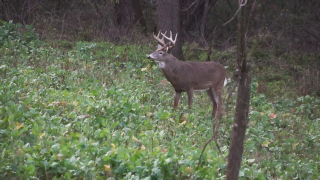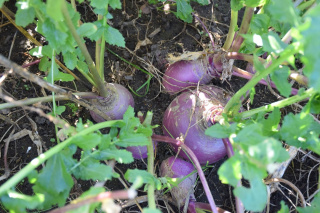Blog
Summer Planting Guide for Fall Hunting Success
By: Tim Monicken, Licensed Real Estate Agent and Land Specialist
Posted: 7/25/2025
🌾 What, When, and How to Plant for a Productive Hunting Season
By: Tim Monicken, Licensed Real Estate Agent and Land Specialist
When it comes to managing hunting land or large acreages, one of the smartest summer strategies is planting a fall food plot. Not only can this improve deer activity and hunting success, but it also boosts the value and overall appeal of your land.
🦌 Why Plant a Fall Food Plot?
Fall food plots serve two key purposes: attracting wildlife—especially whitetail deer—and enhancing habitat quality. A thoughtfully placed and well-managed food plot can be a game-changer for your property’s hunting potential.
Here’s what to consider:
🌿 What to Plant
There are several seed varieties ideal for fall plots, and the best choice often depends on your goals and planting window. Here are a few top options:
Brassicas
This powerhouse group includes turnips, radishes, rape, and kale. Brassicas grow broad leafy tops that shade the soil and reduce weed competition. Below the surface, they form energy-rich bulbs—making them a late-season magnet for deer.
•Planting Window: Late July through mid-August
•Planting Method: Broadcast onto a prepped seedbed, then compact with a cultipacker for good soil contact
•Pro Tip: Apply nitrogen fertilizer (46-0-0) at a rate of 250 lbs/acre for robust, healthy growth.
Cereal Grains
Wheat, oats, rye, and triticale are all easy to establish and highly attractive to deer, particularly heading into rut. They’re digestible, cold-tolerant, and perform well under browsing pressure.
•Planting Window: Late August to mid-September
•Planting Method: Drill, broadcast, or overseed into standing crops (like soybeans) as they begin to drop leaves
Clover
Clover is an excellent perennial option, especially when mixed with cereal grains or brassicas. A fall planting sets up a lush, early-spring food source without competing with warm-season plots.
• Planting Window: Late summer to early fall
• Planting Tip: Overseed with cereal grains or brassicas to maximize soil coverage and long-term forage.
🌱 Final Thoughts
Whether you’re planting for whitetails, increasing your property’s appeal to buyers, or investing in better wildlife management, fall food plots are a smart move. Now’s the time to prepare your land and lock in those future hunting wins.
Looking for land that’s ready for food plots or already attracting game?
Reach out—we specialize in large farms, recreational land, and hunting properties across the Midwest. Let’s find the right ground for your goals.
By: Tim Monicken, Licensed Real Estate Agent and Land Specialist
When it comes to managing hunting land or large acreages, one of the smartest summer strategies is planting a fall food plot. Not only can this improve deer activity and hunting success, but it also boosts the value and overall appeal of your land.
🦌 Why Plant a Fall Food Plot?
Fall food plots serve two key purposes: attracting wildlife—especially whitetail deer—and enhancing habitat quality. A thoughtfully placed and well-managed food plot can be a game-changer for your property’s hunting potential.
Here’s what to consider:
🌿 What to Plant
There are several seed varieties ideal for fall plots, and the best choice often depends on your goals and planting window. Here are a few top options:
Brassicas
This powerhouse group includes turnips, radishes, rape, and kale. Brassicas grow broad leafy tops that shade the soil and reduce weed competition. Below the surface, they form energy-rich bulbs—making them a late-season magnet for deer.
•Planting Window: Late July through mid-August
•Planting Method: Broadcast onto a prepped seedbed, then compact with a cultipacker for good soil contact
•Pro Tip: Apply nitrogen fertilizer (46-0-0) at a rate of 250 lbs/acre for robust, healthy growth.
Cereal Grains
Wheat, oats, rye, and triticale are all easy to establish and highly attractive to deer, particularly heading into rut. They’re digestible, cold-tolerant, and perform well under browsing pressure.
•Planting Window: Late August to mid-September
•Planting Method: Drill, broadcast, or overseed into standing crops (like soybeans) as they begin to drop leaves
Clover
Clover is an excellent perennial option, especially when mixed with cereal grains or brassicas. A fall planting sets up a lush, early-spring food source without competing with warm-season plots.
• Planting Window: Late summer to early fall
• Planting Tip: Overseed with cereal grains or brassicas to maximize soil coverage and long-term forage.
🌱 Final Thoughts
Whether you’re planting for whitetails, increasing your property’s appeal to buyers, or investing in better wildlife management, fall food plots are a smart move. Now’s the time to prepare your land and lock in those future hunting wins.
Looking for land that’s ready for food plots or already attracting game?
Reach out—we specialize in large farms, recreational land, and hunting properties across the Midwest. Let’s find the right ground for your goals.



